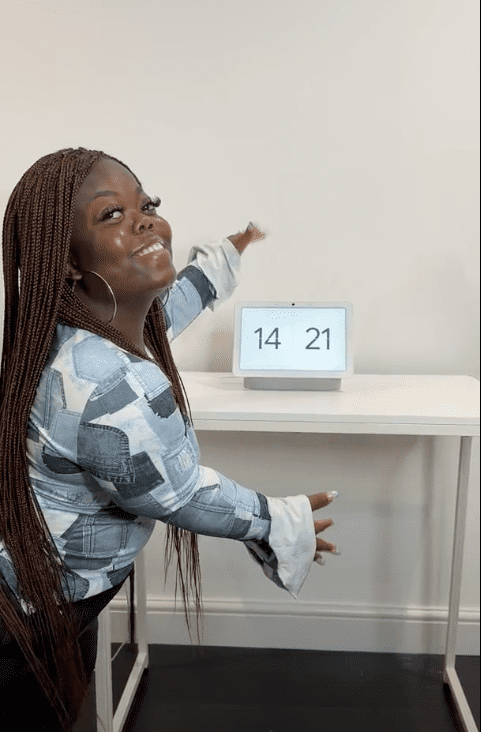In an age where terms like ‘diversity’ and ‘inclusion’ are more than just buzzwords, it’s vital for companies to authentically engage with these concepts. Failing to do so can backfire, hurting both a brand’s wallet and reputation. Welcome to the world of “Diversity Washing”—a hot topic that’s wrapped up in misconceptions. But hey, that’s what we’re here for. Purple Goat Agency is your trusty guide through this complex maze.
The Definition of ‘Diversity Washing’
Think of it as the smoke and mirrors that some companies use to look good on the diversity front. It’s all about flaunting a socially-conscious façade, but it’s just that—a façade. ‘Diversity Washing’ is an umbrella term that encapsulates the act of companies superficially engaging with diversity, equity, and inclusion (DE&I) initiatives.
At its core, this practice involves businesses projecting an image of diversity and social responsibility primarily for commercial gain, rather than a genuine commitment to these values. The practice extends to various areas such as advertising, corporate communication, and even recruitment. When a company claims to stand for diversity yet doesn’t reflect these values in its organisational structure, employee benefits, or business practices, it’s engaging in diversity washing.
Inclusivity Washing and Rainbow Washing
Diversity washing is closely related to, but not the same as, other terms like ‘inclusivity washing’ and ‘rainbow washing.’ While ‘diversity washing’ broadly refers to exploiting the idea of cultural, disability and racial diversity for marketing purposes, ‘inclusivity washing’ leans more towards pretending to embrace a broader range of social issues, including gender, and other forms of marginalisation. ‘Rainbow washing,’ on the other hand, specifically relates to brands leveraging LGBTQ+ symbols and themes without substantive commitment to the community.
Ties to Woke Washing
Diversity washing can also be seen as an extension of “woke washing,” which is the capitalisation of social justice movements and terms without the actual commitment to those causes. While ‘Diversity Washing’ tends to focus specifically on issues related to racial, gender, and other forms of diversity, ‘Woke Washing’ encompasses a broader array of social justice issues, from environmental sustainability to human rights.
The consequences of diversity washing
So, what’s the big deal about getting diversity and inclusion wrong?
Messing up isn’t just a quick hit to your reputation; it’s a massive blow to the public’s faith in brands trying to do better – and, trust us, regaining that faith isn’t a walk in the park. But it goes deeper than that; it affects the whole landscape. When companies use diversity as a marketing gimmick, it drowns out the voices of those who are earnestly trying to bring about change. This ripple effect means that, ultimately, progress is stifled across the board.
We’re talking about more than just missing the mark; we’re talking about slowing down the very change we’re all supposed to be driving. So, yeah, the stakes are high.
9 Easy Ways Your Brand Can Avoid Diversity Washing & Promote Authentic Inclusivity
So now you’re clued in on what Diversity Washing is you can see why no one wants to be that brand. But knowing the problem is half the battle; the other half is doing something about it. Lucky for you, this isn’t a solo journey – Purple Goat are diversity and inclusivity experts who are here to help.
1. Take Responsibility and Be Transparent
Honesty isn’t just the best policy; it’s the only one that counts when you’re looking to avoid Diversity Washing. If you’ve made mistakes in the past, the first step towards authentic diversity and inclusion is admitting your brand’s past shortcomings and apologising for them. Apologising and laying out concrete steps for improvement shows you’re about action, not just talk. Transparency shows that you’re committed to real change.
2. Educate and Train Your Employees
Invest in diversity, equity, and inclusion (DE&I) training for your workforce. By equipping your employees with the right training, you’re planting the seeds for a workplace that’s genuinely inclusive. This not only helps break the cycle of unconscious biases but also ensures that your brand’s inclusivity isn’t just a glossy veneer.
3. Understand Your Audience’s Needs and Values
A one-size-fits-all approach to diversity is a fast track to failure. Do the legwork—research, surveys, and yes, listening to what’s said on social media—to ensure your initiatives actually reflect the lived experiences and expectations of your audience. This avoids tone-deaf campaigns that scream diversity washing. Investing in professional market research services can be very valuable for this, and help prevent inadvertent bias in your data collection.
4. Get Employee Feedback about Company Culture
The people on your payroll know the culture better than anyone else. Inviting anonymous feedback can shed light on gaps you never knew existed. Acting on this feedback demonstrates a commitment to real, not performative, inclusivity.
5. Hire a Diverse Workforce and Promote Diverse Leadership
Diversity starts with your workforce. From the hiring process to promotions, ensure that you’re not fostering a homogeneous environment. Leadership sets the tone for a company. A diverse leadership team isn’t just good optics; it’s good business. It brings a range of perspectives to the table and shows that your commitment to diversity isn’t skin-deep—avoiding the Diversity Washing label.

6. Develop a Comprehensive Diversity and Inclusion Strategy
Spend time on a diversity and inclusion strategy that is specific to the needs of your business. You need an all-encompassing strategy that runs through every business vein—from hiring to marketing. And this isn’t a ‘set it and forget it’ deal; it needs active enforcement to hold the entire organisation accountable. If you need help, agencies like Purple Goat know this inside out and can help your business get it right.
7. Avoid Stereotypes and Tokenism in Advertising and Marketing
Let’s be clear: tokenism is the poster child of Diversity Washing. Real representation means showing the rich tapestry of society as it is, not how stereotypes portray it to be. Authentic campaigns can actually resonate with real people, not just tick boxes. From influencer marketing to paid ads and everything in between, all areas of marketing need to be reviewed, considered, discussed and worked on to ensure they are authentically inclusive.


8. Collaborate with Organisations and Communities
Partnerships speak louder than standalone corporate statements. When it comes to authentic inclusivity, actions definitely speak louder than words. To really give your DE&I efforts teeth, consider allying with organisations, charities and communities that are already making strides in the areas of diversity, equity, and inclusion.
These partnerships not only enrich your own brand’s understanding and commitment to diversity but also offer a mutual benefit by helping these organisations amplify their message. It’s not just about brand optics; it’s about contributing to a cause greater than your brand while learning how to internalise these values within your company.
9. Ensure Your Brand is Accessible to All
An inclusive brand is an accessible brand. Make sure your website, social media, and customer service are accessible to all, from a website that’s accessible to individuals with disabilities to customer service that speaks everyone’s language. But don’t make a song and dance about it.
What to Do If You Suspect a Company is Guilty of Diversity Washing
If you suspect a company is engaged in Diversity Washing you have several avenues for action.
First, examine the diversity of their leadership and workforce, as well as any long-standing commitment to diversity initiatives, to ascertain if their external messaging matches their internal reality. Employee reviews on platforms like Glassdoor can offer valuable insights into the company’s actual culture. If inconsistencies are found, consider voicing your concerns to the company to bring attention to the issue.
The power of consumer choice allows you to shift your support to more genuinely inclusive brands. Regulatory bodies may also provide a channel for reporting misleading corporate communications. By doing so, you contribute to a culture that values authentic commitment to diversity over mere optics.
Examples of Diversity Washing
What does Diversity Washing actually look like in the wild? We’re not naming and shaming anyone here; these examples are purely hypothetical. But they’ll give you a solid idea of what to watch out for.
The Flashy Ad Campaign with No Follow-Through
Imagine Brand A dropping a killer ad campaign featuring a beautifully diverse cast of characters, yet a closer look at their leadership team reveals their boardroom doesn’t have a single person of colour. Ouch! That’s Diversity Washing in action.
The ‘Diverse’ Recruitment Drive
Now, consider TechCo, a Silicon Valley start-up, announcing a massive hiring initiative focusing on underrepresented groups. Awesome, right? Except once they get the job, these new hires discover they’re the only splash of diversity in a sea of uniformity. Even worse, there’s no support system or inclusive culture in place. That’s not what we call a commitment to diversity.
The Accessibility Illusion
Visualise this: a health and fitness brand rolls out an awe-inspiring campaign featuring disabled athletes breaking barriers. The imagery is powerful, the message is spot-on, and the social media likes are through the roof. But wait a minute, their gym locations lack proper accessibility features, and their wellness app isn’t compatible with screen-readers for visually impaired users. So while they’ve grabbed the spotlight with a fantastic campaign, they’ve missed the point when it comes to true inclusivity for disabled individuals. It’s Diversity Washing at its most ironic.
Conclusion – Diversity Washing
Navigating the complexities of diversity isn’t just a ‘nice to have’; it’s essential for any brand that wants to be a part of modern society. The risk of falling into the trap of Diversity Washing—merely paying lip service to diversity, equity, and inclusion—can have damaging ripple effects, eroding public trust and stifling real change. From transparency and education to establishing effective partnerships and building a genuinely accessible brand, there are practical steps to ensure authentic engagement with DE&I.
And if you spot a company that’s all show and no substance, remember that accountability starts with each one of us: scrutinise, speak up, and lend your support to those truly making a difference. At the end of the day, meaningful progress is a collective endeavour, and it only happens when we commit to authentic action over superficial gestures.
How Purple Goat Can Help
At Purple Goat, we’re not about that tick-box life; we’re here to make you feel comfortable and confident around all things diversity and inclusion.
From deep-dive DE&I training that resonates with your entire team to crafting social media campaigns that truly echo your brand’s authentic commitment to diversity, we’ve got you covered. Our comprehensive strategies touch every facet of your business, ensuring you’re not just talking the talk but walking the inclusivity walk. Simply put, with Purple Goat by your side, you’ll build a brand that embodies diversity, not just one that markets it.
Get in touch to find out how we can help your business or brand.




